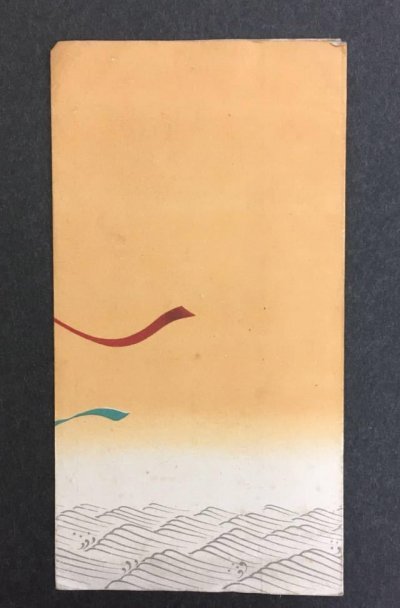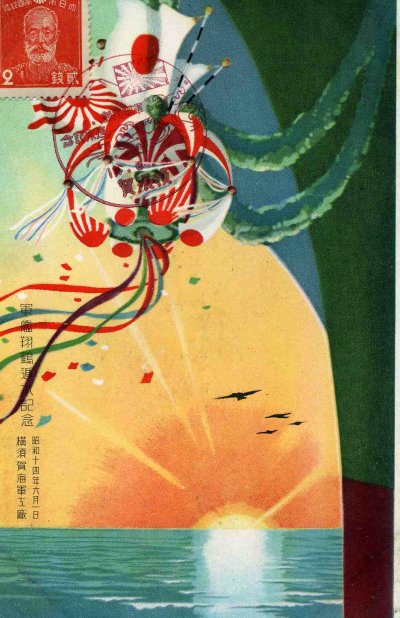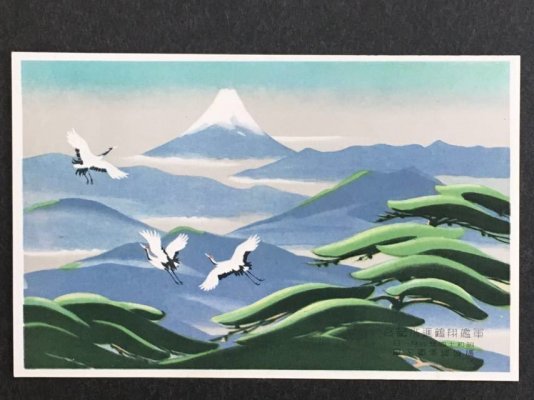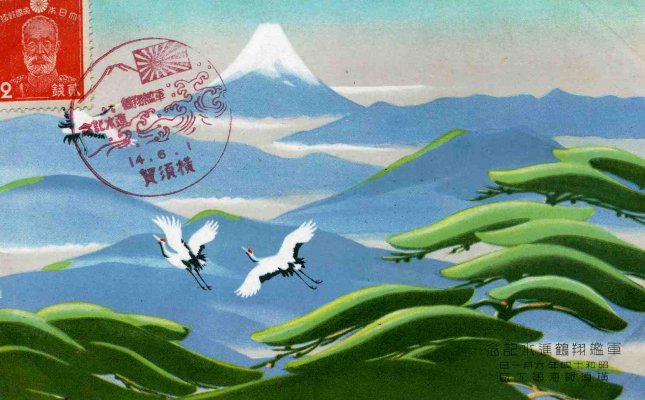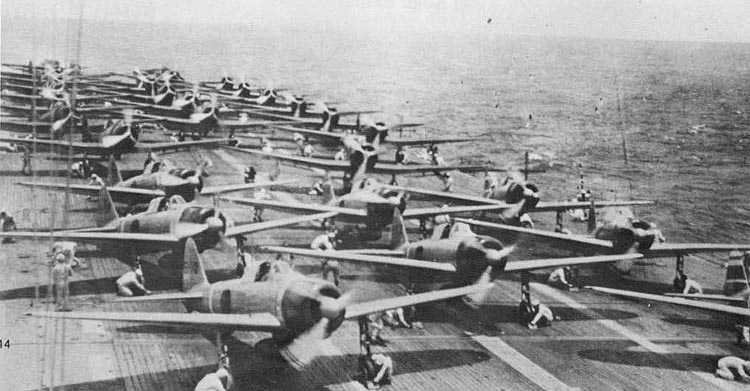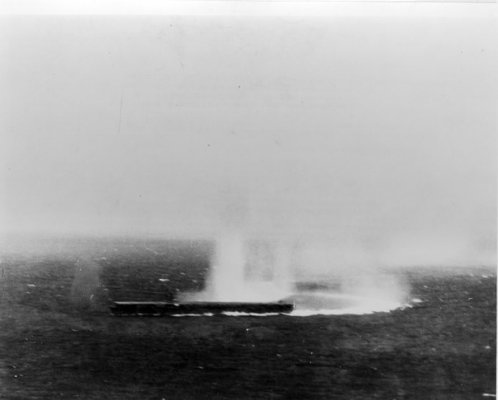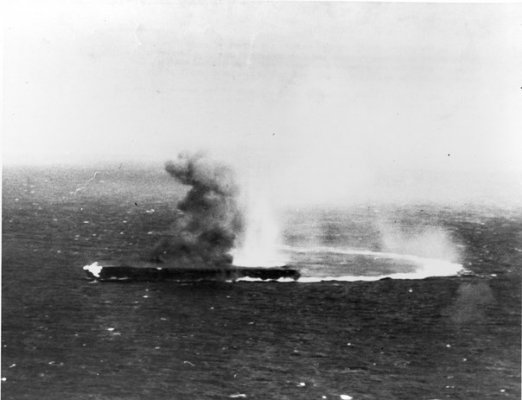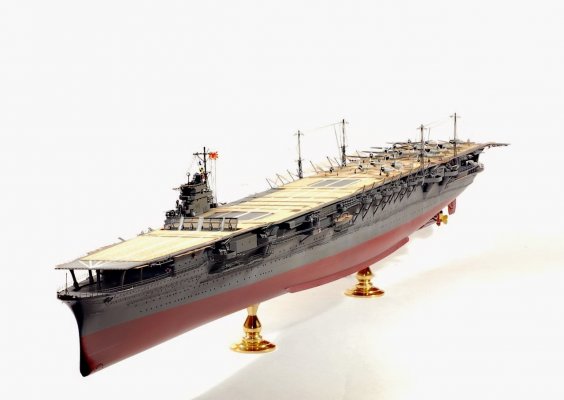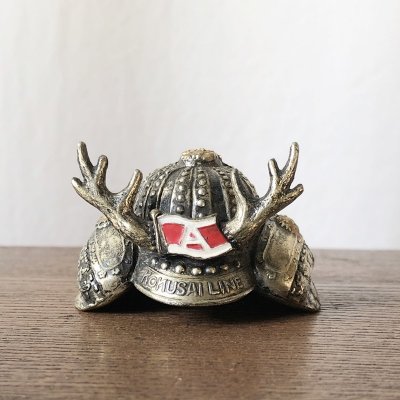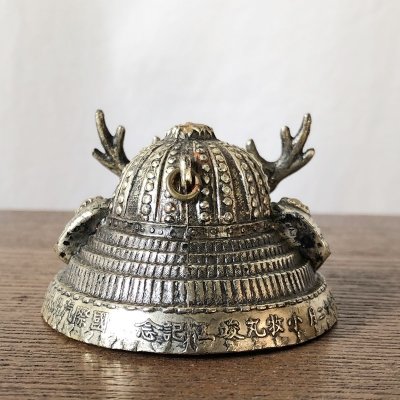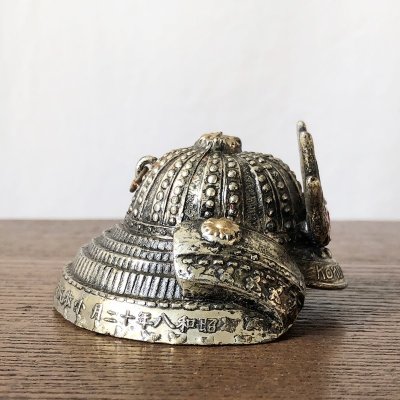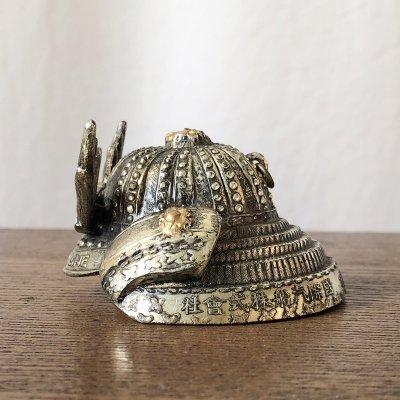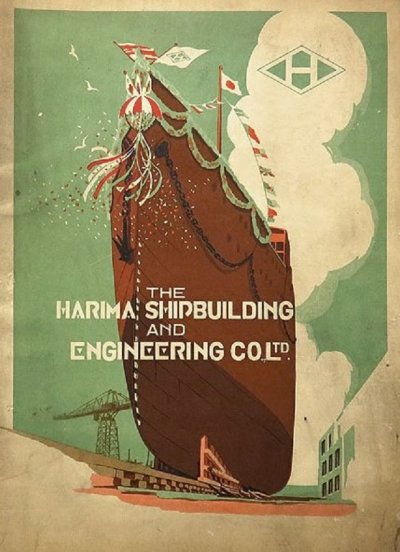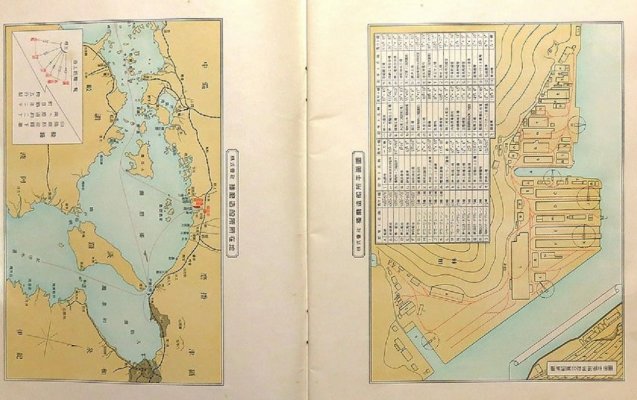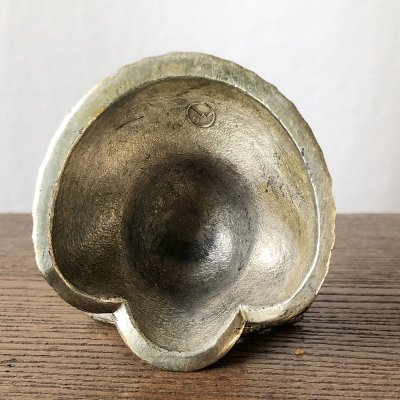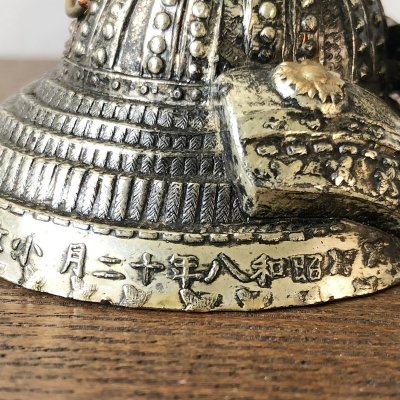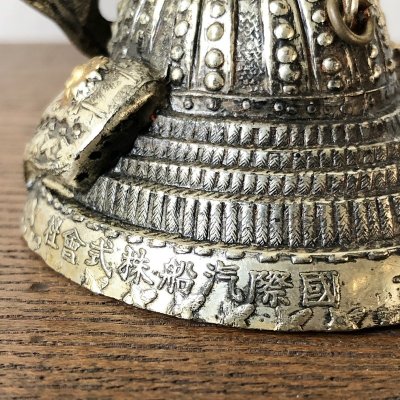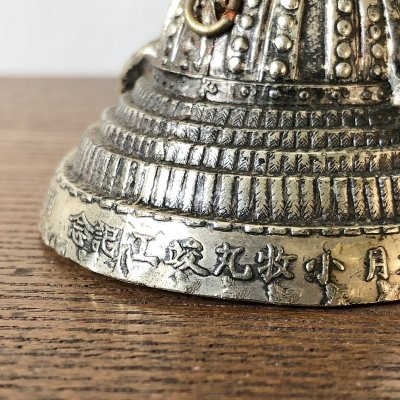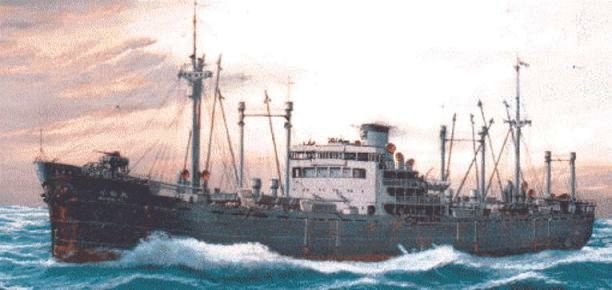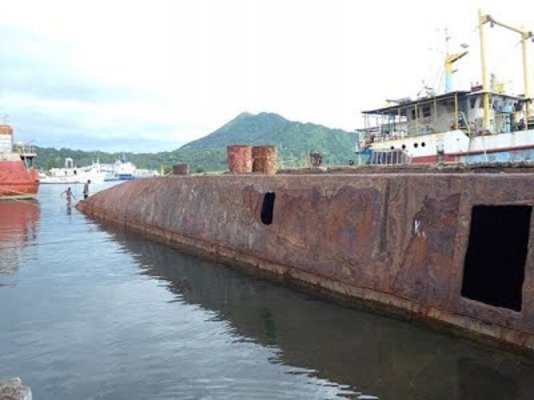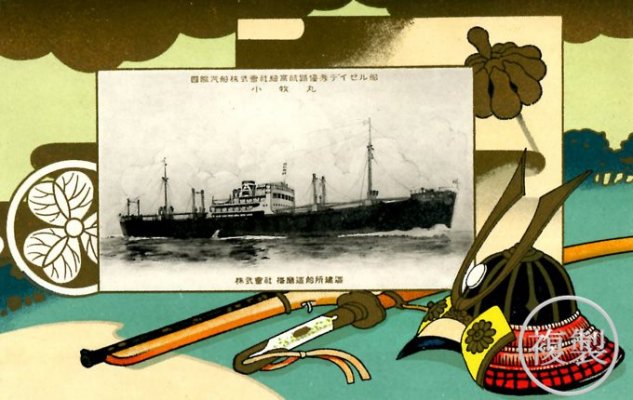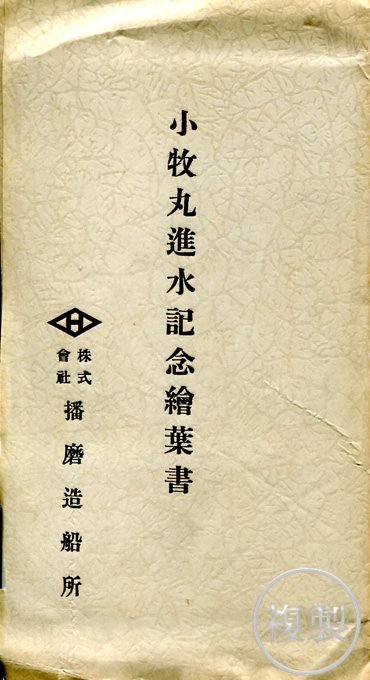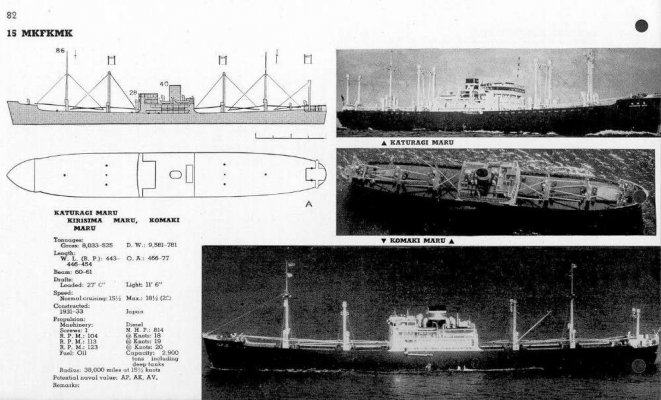Вы используете устаревший браузер. Этот и другие сайты могут отображаться в нём некорректно.
Вам необходимо обновить браузер или попробовать использовать другой.
Вам необходимо обновить браузер или попробовать использовать другой.
Медали, чашки, плакетки и прочие памятные предметы на закладку и спуск кораблей
- Автор темы Стас Шимбу
- Дата начала
Погибнем 19 июня 1944 года в результате торпедной атаки подводной лодки №244 Кавэлла ВМС США.
Любопытный разбор гибели авианосца
http://www.combinedfleet.com/shoksink.htm
Любопытный разбор гибели авианосца
http://www.combinedfleet.com/shoksink.htm
Вложения
Основные вехи боевого пути (а путь у нас оказался более чем боевым) от http://www.combinedfleet.com/Komaki_t.htm
18 June 1932:
Aioi. Laid down at the Harima Shibuilding and Engineering Co.'s shipyard for Kokusai Kisen K. K. (Tokyo)
8 July 1933:
Launched and named KOMAKI MARU.
27 November 1933:
Completed and put on New York service with the Kokusai Line as a freighter with accomodations for 12 passengers.
1934:
The Kokusai Line begins Yokohama, Los Angeles and New York service with KOMAKI and KAMO MARUs.
January 1937:
Continues service for the Kokusai Line with ports of call at Yokohama, Moji, Kobe, Manila, Singapore, Penang, Los Angeles, Panama Canal, Galveston, New Orleans, Baltimore and New York.
7 July 1937: The Marco Polo Bridge (The First "China") Incident:
Lugouqiao, China. Japanese troops on night maneuvers fire blank cartridges. Chinese troops fire back, but do not cause injuries. At morning roll call, the Japanese discover a soldier missing. They assume the Chinese captured him and demand entry to a Peking (Beijing) suburb to look for him, but the Chinese refuse. The Japanese then shell the city and an undeclared war begins.
E August 1937:
Requisitioned by the IJA to support the 21st Sentai in China.
29 November 1940:
Requisitioned by the IJN. Begins conversion to an armed auxiliary aircraft transport at Mitsubishi Zosen, Yokohama. 4.7-inch (120-mm) guns are installed at the bow and the stern.
15 January 1941:
The conversion is completed. Registered in the IJN. Captain (Vice Admiral, posthumously) Ishii Shizue (39)(former XO of AKAGI) assumes command.
6 March 1941:
Departs Yokohama for the south seas (now Micronesia) area.
25 March 1941:
Captain (Rear Admiral, posthumously) Nakamura Masao (40)(former XO of FURUTAKA) assumes command.
13 April 1941:
Arrives at Yokohama.
15 May 1941:
Departs Takao for the south seas area.
7 June 1941:
Arrives at Takao.
15 June 1941:
Departs Tateyama for the south seas area.
3 July 1941:
Arrives at Takao.
14 July 1941:
Departs Furue to central China coast.
3 August 1941:
Arrives at Sasebo.
11 August 1941:
Departs Sasebo for the central China coast.
7 September 1941:
Arrives at Tateyama.
25 October 1941:
Departs Sasebo for the south China coast.
21 November 1941:
Arrives at Takao, Formosa. KOMAKI MARU is attached to Rear Admiral (later Vice Admiral) Takenaka Ryuzo’s (39)(former CO of HIRYU) 23rd Naval Air Flotilla in Vice Admiral (later Admiral) Tsukahara Nishizo’s (36)(former CO of AKAGI) 11th Air Fleet.
25 November 1941:
Departs Takao for exercises with the 23rd Sentai.
7 December 1941:
Arrives at Takao.
8 December 1941: Operation "M" - The Attack on the Philippines:
At 1015, the 21st and 23rd Air Flotillas launch all available Mitsubishi G3M "Nell" and G4M Betty" bomber aircraft to attack air bases in Luzon. Because of bad weather the attack is not made until 1220, nine hours after the attack on Pearl Harbor. The Japanese are surprised to find MajGen (later LtGen) Lewis H. Brereton's Far East Air Force's Boeing B-17 "Flying Fortress" bombers, Seversky P-35 "Guardsman" and Curtiss P-40 "Kittyhawk" fighters still on the ground and destroy many. [1]
25 December 1941:
Departs Takao.
29 December 1941:
Off Lamon Bay. KOMAKI MARU is damaged by a fire.
13 January 1942:
Departs Jolo escorted by auxiliary gunboat TAIKO MARU
14 January 1942:
Arrives Davao and departs later that day still with TAIKO MARU as escort.
15 January 1942:
Arrives at Jolo. Later sails to Tarakan.
28 January 1942:
Arrives at Takao.
2 February 1942:
Departs Takao. Supports Vice Admiral Takahashi Ibo's (36) (former CO of KIRISHIMA) Third Fleet's Netherlands East Indies Force's Invasion Force.
4 March 1942:
Arrives at Rabaul. Probably delivers Mitsubishi A6M "Zeke" fighter aircraft to elements of the 4th Naval Air Group.
8 March 1942:
Bandung. Governor General Dr. Alidius W. L. Tjarda van Starkenborgh Stachouwer surrenders the Netherlands East Indies. That same day, KOMAKI MARU departs Rabaul.
14 March 1942:
Arrives at Kendari, Celebes. Probably delivers A6M fighter aircraft to elements of the 3rd Naval Air Group.
18 March 1942:
Departs Kendari.
19 March 1942:
Arrives at Macassar, Celebes. Probably delivers A6M fighter aircraft to elements of the 3rd Naval Air Group.
23 March 1942:
Departs Macassar.
25 March 1942:
Arrives at Bali, Java. Probably delivers A6M fighter aircraft and munitions to elements of the 3rd and Tainan Naval Air Groups based at the island's Denpasar airfield.
2 April 1942:
Departs Bali.
4 April 1942:
Arrives at Kupang, Timor. Probably delivers A6M fighter aircraft to elements of the 3rd Naval Air Group.
5 April 1942:
Departs Kupang.
7 April 1942:
Arrives at Ambon. Probably delivers A6M fighter aircraft to elements of the 3rd Naval Air Group. Departs later that same day.
10 April 1942:
Arrives at Davao and departs later that day.
16 April 1942:
Arrives off Rabaul.
17 April 1942:
Rabaul. Arrives at Simpson Harbor alongside pier No. 3. Disembarks flight personnel of the Tainan Naval Air Group, including future high-scoring ace (64) Sakai Saburo, and begins unloading bombs and ammunition.
18 April 1942:
Rabaul. At about 1030, Fifth Air Force Martin B-26 “Marauder” medium bombers of the 22nd Bomb Group based in Townsville, Australia attack the harbor. KOMAKI MARU is hit by a bomb. Her stern explodes and she settles with only her top remaining above water. Captain Nakamura survives the attack.
At about 1400, Japanese shore batteries finish sinking the ship at 04-15S, 152-20E. KOMAKI MARU is the first Japanese ship sunk in Simpson Harbor.
Later, the hull of KOMAKI MARU is filled with earth and sand and it becomes a pier known as the wreck wharf.
1 May 1942:
Removed from the Navy List.
---------------------------------------------------------
Authors’ Notes:
[1] The responsibility for this debacle remains controversial. In 1945, LtGen Richard K. Sutherland, MacArthur's longtime Chief of Staff, said that days before the attack all B-17s had been ordered to Del Monte, 600 miles from Clark Field, to be safe from Japanese attack. From Del Monte, B-17s could have staged out of Clark Field to bomb Formosa, but Brereton did not obey the order. Only half the B-17s were sent south.
According to Sutherland, holding the bombers at Clark Field that first day was entirely due to Brereton who argued that to know what to bomb he first had to have recon photos of the 25 air fields on Formosa. For his part, Brereton recalled that Sutherland, on behalf of MacArthur, denied him authority to launch any attack. Although the Japanese attacks on Clark, Nichols and other fields reduced the strength of the American Far East Air Force by half, no formal investigation was ever conducted to determine responsibility for the disaster as was done after Pearl Harbor.
Picture credit and general thanks goes to Gilbert Casse of France.
- Bob Hackett, Sander Kingsepp and Peter Cundall.
18 June 1932:
Aioi. Laid down at the Harima Shibuilding and Engineering Co.'s shipyard for Kokusai Kisen K. K. (Tokyo)
8 July 1933:
Launched and named KOMAKI MARU.
27 November 1933:
Completed and put on New York service with the Kokusai Line as a freighter with accomodations for 12 passengers.
1934:
The Kokusai Line begins Yokohama, Los Angeles and New York service with KOMAKI and KAMO MARUs.
January 1937:
Continues service for the Kokusai Line with ports of call at Yokohama, Moji, Kobe, Manila, Singapore, Penang, Los Angeles, Panama Canal, Galveston, New Orleans, Baltimore and New York.
7 July 1937: The Marco Polo Bridge (The First "China") Incident:
Lugouqiao, China. Japanese troops on night maneuvers fire blank cartridges. Chinese troops fire back, but do not cause injuries. At morning roll call, the Japanese discover a soldier missing. They assume the Chinese captured him and demand entry to a Peking (Beijing) suburb to look for him, but the Chinese refuse. The Japanese then shell the city and an undeclared war begins.
E August 1937:
Requisitioned by the IJA to support the 21st Sentai in China.
29 November 1940:
Requisitioned by the IJN. Begins conversion to an armed auxiliary aircraft transport at Mitsubishi Zosen, Yokohama. 4.7-inch (120-mm) guns are installed at the bow and the stern.
15 January 1941:
The conversion is completed. Registered in the IJN. Captain (Vice Admiral, posthumously) Ishii Shizue (39)(former XO of AKAGI) assumes command.
6 March 1941:
Departs Yokohama for the south seas (now Micronesia) area.
25 March 1941:
Captain (Rear Admiral, posthumously) Nakamura Masao (40)(former XO of FURUTAKA) assumes command.
13 April 1941:
Arrives at Yokohama.
15 May 1941:
Departs Takao for the south seas area.
7 June 1941:
Arrives at Takao.
15 June 1941:
Departs Tateyama for the south seas area.
3 July 1941:
Arrives at Takao.
14 July 1941:
Departs Furue to central China coast.
3 August 1941:
Arrives at Sasebo.
11 August 1941:
Departs Sasebo for the central China coast.
7 September 1941:
Arrives at Tateyama.
25 October 1941:
Departs Sasebo for the south China coast.
21 November 1941:
Arrives at Takao, Formosa. KOMAKI MARU is attached to Rear Admiral (later Vice Admiral) Takenaka Ryuzo’s (39)(former CO of HIRYU) 23rd Naval Air Flotilla in Vice Admiral (later Admiral) Tsukahara Nishizo’s (36)(former CO of AKAGI) 11th Air Fleet.
25 November 1941:
Departs Takao for exercises with the 23rd Sentai.
7 December 1941:
Arrives at Takao.
8 December 1941: Operation "M" - The Attack on the Philippines:
At 1015, the 21st and 23rd Air Flotillas launch all available Mitsubishi G3M "Nell" and G4M Betty" bomber aircraft to attack air bases in Luzon. Because of bad weather the attack is not made until 1220, nine hours after the attack on Pearl Harbor. The Japanese are surprised to find MajGen (later LtGen) Lewis H. Brereton's Far East Air Force's Boeing B-17 "Flying Fortress" bombers, Seversky P-35 "Guardsman" and Curtiss P-40 "Kittyhawk" fighters still on the ground and destroy many. [1]
25 December 1941:
Departs Takao.
29 December 1941:
Off Lamon Bay. KOMAKI MARU is damaged by a fire.
13 January 1942:
Departs Jolo escorted by auxiliary gunboat TAIKO MARU
14 January 1942:
Arrives Davao and departs later that day still with TAIKO MARU as escort.
15 January 1942:
Arrives at Jolo. Later sails to Tarakan.
28 January 1942:
Arrives at Takao.
2 February 1942:
Departs Takao. Supports Vice Admiral Takahashi Ibo's (36) (former CO of KIRISHIMA) Third Fleet's Netherlands East Indies Force's Invasion Force.
4 March 1942:
Arrives at Rabaul. Probably delivers Mitsubishi A6M "Zeke" fighter aircraft to elements of the 4th Naval Air Group.
8 March 1942:
Bandung. Governor General Dr. Alidius W. L. Tjarda van Starkenborgh Stachouwer surrenders the Netherlands East Indies. That same day, KOMAKI MARU departs Rabaul.
14 March 1942:
Arrives at Kendari, Celebes. Probably delivers A6M fighter aircraft to elements of the 3rd Naval Air Group.
18 March 1942:
Departs Kendari.
19 March 1942:
Arrives at Macassar, Celebes. Probably delivers A6M fighter aircraft to elements of the 3rd Naval Air Group.
23 March 1942:
Departs Macassar.
25 March 1942:
Arrives at Bali, Java. Probably delivers A6M fighter aircraft and munitions to elements of the 3rd and Tainan Naval Air Groups based at the island's Denpasar airfield.
2 April 1942:
Departs Bali.
4 April 1942:
Arrives at Kupang, Timor. Probably delivers A6M fighter aircraft to elements of the 3rd Naval Air Group.
5 April 1942:
Departs Kupang.
7 April 1942:
Arrives at Ambon. Probably delivers A6M fighter aircraft to elements of the 3rd Naval Air Group. Departs later that same day.
10 April 1942:
Arrives at Davao and departs later that day.
16 April 1942:
Arrives off Rabaul.
17 April 1942:
Rabaul. Arrives at Simpson Harbor alongside pier No. 3. Disembarks flight personnel of the Tainan Naval Air Group, including future high-scoring ace (64) Sakai Saburo, and begins unloading bombs and ammunition.
18 April 1942:
Rabaul. At about 1030, Fifth Air Force Martin B-26 “Marauder” medium bombers of the 22nd Bomb Group based in Townsville, Australia attack the harbor. KOMAKI MARU is hit by a bomb. Her stern explodes and she settles with only her top remaining above water. Captain Nakamura survives the attack.
At about 1400, Japanese shore batteries finish sinking the ship at 04-15S, 152-20E. KOMAKI MARU is the first Japanese ship sunk in Simpson Harbor.
Later, the hull of KOMAKI MARU is filled with earth and sand and it becomes a pier known as the wreck wharf.
1 May 1942:
Removed from the Navy List.
---------------------------------------------------------
Authors’ Notes:
[1] The responsibility for this debacle remains controversial. In 1945, LtGen Richard K. Sutherland, MacArthur's longtime Chief of Staff, said that days before the attack all B-17s had been ordered to Del Monte, 600 miles from Clark Field, to be safe from Japanese attack. From Del Monte, B-17s could have staged out of Clark Field to bomb Formosa, but Brereton did not obey the order. Only half the B-17s were sent south.
According to Sutherland, holding the bombers at Clark Field that first day was entirely due to Brereton who argued that to know what to bomb he first had to have recon photos of the 25 air fields on Formosa. For his part, Brereton recalled that Sutherland, on behalf of MacArthur, denied him authority to launch any attack. Although the Japanese attacks on Clark, Nichols and other fields reduced the strength of the American Far East Air Force by half, no formal investigation was ever conducted to determine responsibility for the disaster as was done after Pearl Harbor.
Picture credit and general thanks goes to Gilbert Casse of France.
- Bob Hackett, Sander Kingsepp and Peter Cundall.
Интересная история гибели и последующей "службы" остова корабля.
Sinking History
Next, on April 17, 1942 arrives at Simpson Harbor off Rabaul and unloads cargo at pier #3, including A6M2 Zero fighters and personnel of the Tainain Kokutai, including Saburo Sakai (тот самый Сабуро Сакаи! https://ak-group.ru/forum/showthread.php?p=214755#post214755).
On April 18, 1942 at roughly 10:30am, B-26 "Shittenengitten" 40-1404 on a bombing mission over Rabaul attacked shipping in Simpson Harbor dropped its four 500 lbs bombs aimed at this ship, two missed hitting the shore (one did not explode), one 500lbs bomb scored a direct hit, the forth landed in the water. The ship's stern exploded violently and the ship settled with only the deck remaining above water.
The explosion set fires ashore among bombs and fuel that were being unloaded and set fire to buildings and the jetty. In total 11 KIA , 31 WIA from the Tainan Kokutai plus 11 others WIA. Captain Nakamura survived the attack. Later, eighty Australian POWs accused of applauding at the sinking ship were later beaten in retribution.
Around 2:00pm, Japanese shore batteries fire at the ship attempting to fully sinking it, but were unsuccessful. This was the first Japanese ship sunk into Simpson Harbor.
A Japanese soldier at Rabaul made a diary note:
“After air raid saw Komaki Maru alongside #3 pier flames rising from her bridge. From 2 o’clock in the afternoon our artillery fired at the ship and sank her.” (ATIS 172)
Shipwreck
Afterwards, the hull of Komaki Maru was filled with earth and sand making it into a pear. During the war, the ship was repeatedly bombed and strafed after being mistaken as an active ship.
Postwar, the shipwreck was filled with cement and became a permanent dock.
At one time after the war locals were using part of the wreck as an open toilet and so a sign was erected which read: “No ken pek pek” (Do not defecate). The wreck then became known as the “No ken pek pek Maru”. As, known as the "Wreck Wharf". To this day it is still most probably full of munitions and a very dangerous site. Never-the-less, for over 50 years now, it’s filled-in hulk has been used as a wharf.
Salvage Diver Johnno Johnstone recalled:
"I made several surveys of the wreck. It was loaded with shell cases, some I recovered. It was the propeller that I was after. I had located a spare blade in the aft quarters, this was 3 1/2 tons. Mean then the the main propeller would be nearly 14 tons, scrap value &2,000. I thought of the Florence [explosion killed salvagers], and struck Komaki Maru off my list! I intended at a latter day to oxy-cut the shaft, even this was considered unsafe by the port authorities, and at their request I abandoned the wreck. Even after all their years I still regard it as a potential danger."
Источник: https://www.pacificwrecks.com/ships/maru/komaki.html
Sinking History
Next, on April 17, 1942 arrives at Simpson Harbor off Rabaul and unloads cargo at pier #3, including A6M2 Zero fighters and personnel of the Tainain Kokutai, including Saburo Sakai (тот самый Сабуро Сакаи! https://ak-group.ru/forum/showthread.php?p=214755#post214755).
On April 18, 1942 at roughly 10:30am, B-26 "Shittenengitten" 40-1404 on a bombing mission over Rabaul attacked shipping in Simpson Harbor dropped its four 500 lbs bombs aimed at this ship, two missed hitting the shore (one did not explode), one 500lbs bomb scored a direct hit, the forth landed in the water. The ship's stern exploded violently and the ship settled with only the deck remaining above water.
The explosion set fires ashore among bombs and fuel that were being unloaded and set fire to buildings and the jetty. In total 11 KIA , 31 WIA from the Tainan Kokutai plus 11 others WIA. Captain Nakamura survived the attack. Later, eighty Australian POWs accused of applauding at the sinking ship were later beaten in retribution.
Around 2:00pm, Japanese shore batteries fire at the ship attempting to fully sinking it, but were unsuccessful. This was the first Japanese ship sunk into Simpson Harbor.
A Japanese soldier at Rabaul made a diary note:
“After air raid saw Komaki Maru alongside #3 pier flames rising from her bridge. From 2 o’clock in the afternoon our artillery fired at the ship and sank her.” (ATIS 172)
Shipwreck
Afterwards, the hull of Komaki Maru was filled with earth and sand making it into a pear. During the war, the ship was repeatedly bombed and strafed after being mistaken as an active ship.
Postwar, the shipwreck was filled with cement and became a permanent dock.
At one time after the war locals were using part of the wreck as an open toilet and so a sign was erected which read: “No ken pek pek” (Do not defecate). The wreck then became known as the “No ken pek pek Maru”. As, known as the "Wreck Wharf". To this day it is still most probably full of munitions and a very dangerous site. Never-the-less, for over 50 years now, it’s filled-in hulk has been used as a wharf.
Salvage Diver Johnno Johnstone recalled:
"I made several surveys of the wreck. It was loaded with shell cases, some I recovered. It was the propeller that I was after. I had located a spare blade in the aft quarters, this was 3 1/2 tons. Mean then the the main propeller would be nearly 14 tons, scrap value &2,000. I thought of the Florence [explosion killed salvagers], and struck Komaki Maru off my list! I intended at a latter day to oxy-cut the shaft, even this was considered unsafe by the port authorities, and at their request I abandoned the wreck. Even after all their years I still regard it as a potential danger."
Источник: https://www.pacificwrecks.com/ships/maru/komaki.html

